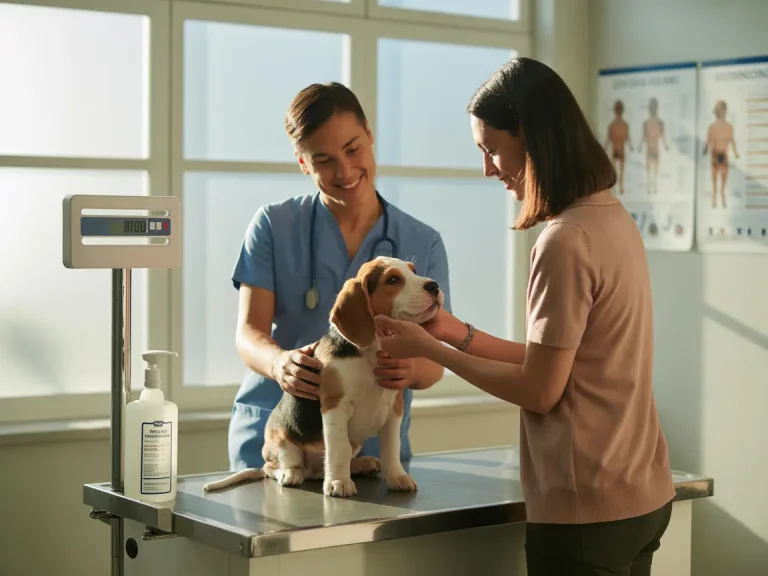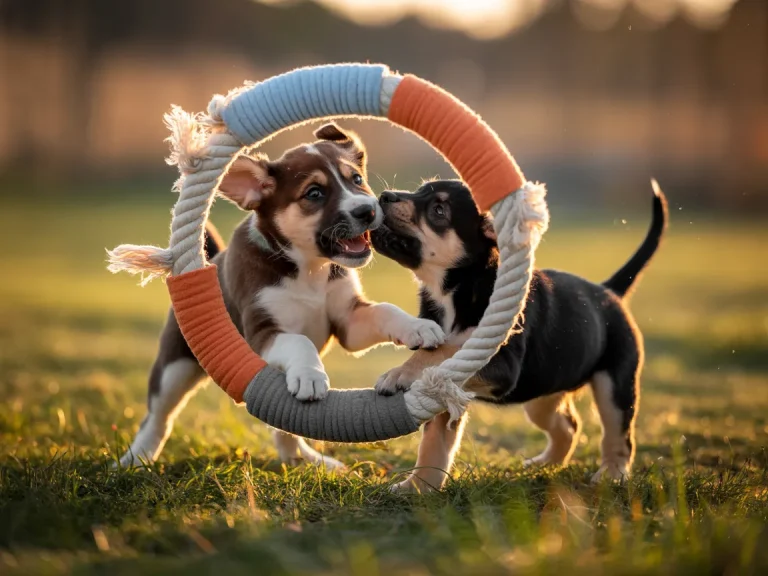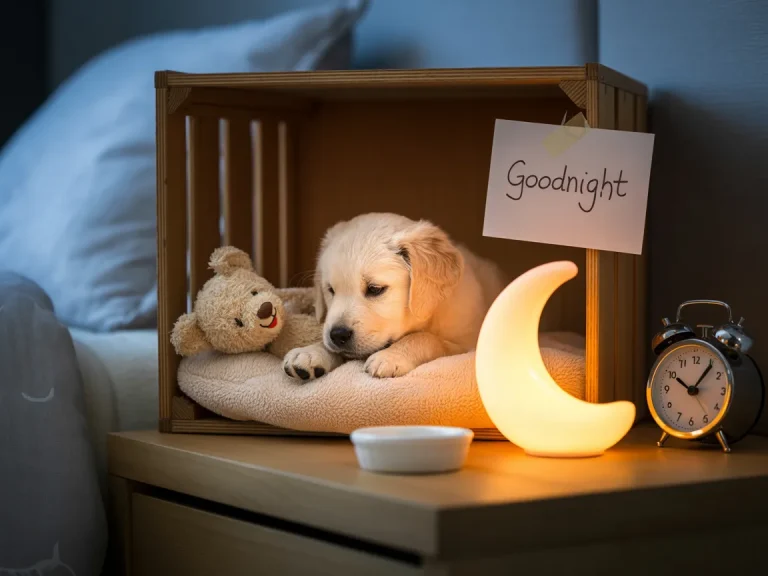Potty training a puppy can feel like tiptoeing through a minefield of surprise puddles and mixed signals—but it doesn’t have to. With a simple system, a few reliable tools, and clear cues, you can turn bathroom breaks into a calm, clockwork routine. This guide walks you through five game-changing strategies for building reliable indoor and outdoor potty areas, locking in a steady puppy potty schedule, and reaching that accident-free milestone faster. Whether you’re living high up in a city walk-up or setting up a backyard zone, these steps are practical, puppy-friendly, and rooted in clear learning principles.
1. Zone-Based Outdoor Dog Potty Area
Pick one outdoor spot and make it the spot—easy to reach, a bit private, and clearly outlined so it’s obvious even when your pup is wiggly with excitement. Think low edging, mulch borders, or a tidy square of turf—like a little “restroom” sign your dog can read with their nose. Take your puppy there at predictable times (morning, after meals and play, before bed), pair it with a simple cue like “Go potty,” and reward the instant they finish. Over a few days, that trifecta—place, cue, timing—becomes a powerful habit loop. Add an easy-to-clean surface (artificial turf or pea gravel) so it’s clear to both of you where business gets done.
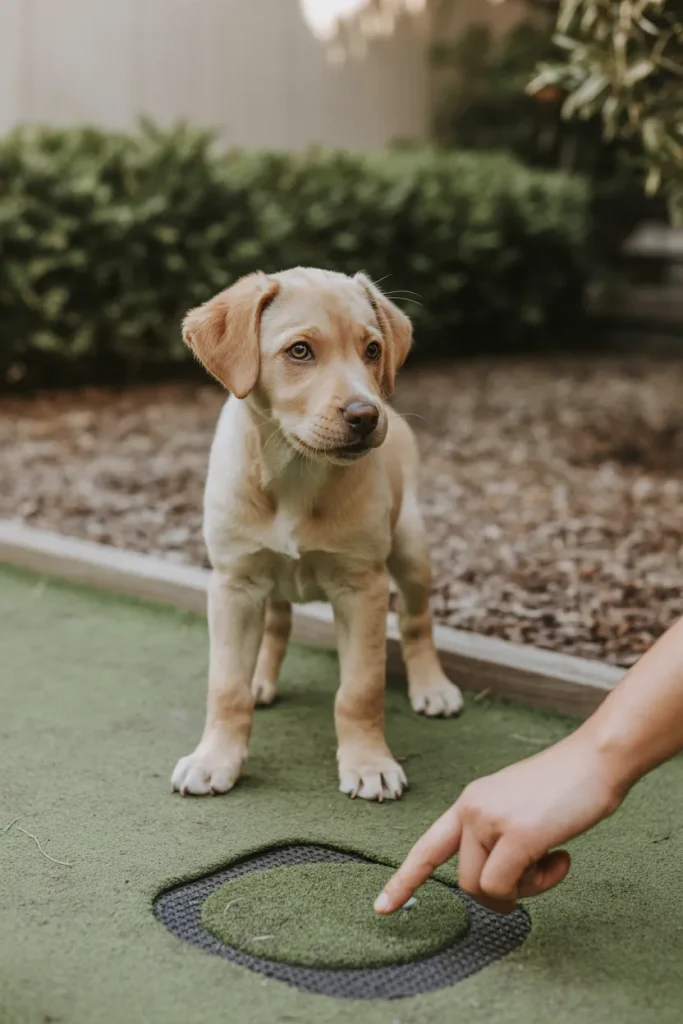
2. Indoor Dog Potty Stations with Transition Bridges
No yard? Crummy weather? Set up a dedicated indoor station that mirrors your outdoor setup: grass pad, turf tray, or a contained litter-style system in a quiet corner. Use the same cue and the same reward timing so your puppy doesn’t have to relearn the rules every time the door opens. Here’s the magic move later: slide the station closer to the door in stages, then onto the balcony or just outside, and eventually to your outdoor zone. It’s a gentle on-ramp—familiar smell and texture first, new location second—so your pup connects the dots without drama.
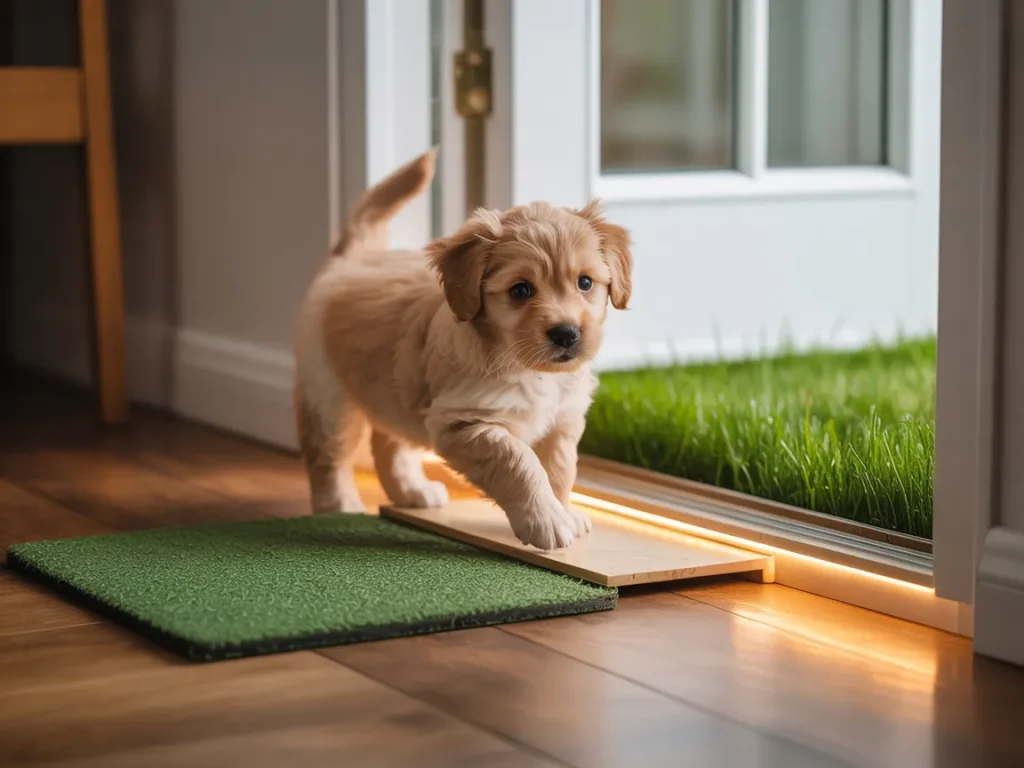
3. Scheduled Cue-Based Potty Routine (Puppy Potty Training Schedule)
Dogs run on rhythm. Anchor potty trips to natural “beats” in the day—wake-ups, meals, play bursts, drinks, naps, and bedtime—and you’ll see accidents drop because the bladder learns the tempo. Bring your pup to the spot, give the cue, reward the win, and keep the outing short and to the point. For the first two weeks, jot quick notes: when they went, how long after eating, any misses. That tiny log turns guesswork into a custom schedule for your puppy’s metabolism—and makes potty breaks feel less like a scramble and more like a routine you both can trust. If you want a simple refresher on the basics while you build your own rhythm, the AKC housetraining guide is a solid quick read that pairs well with this plan.
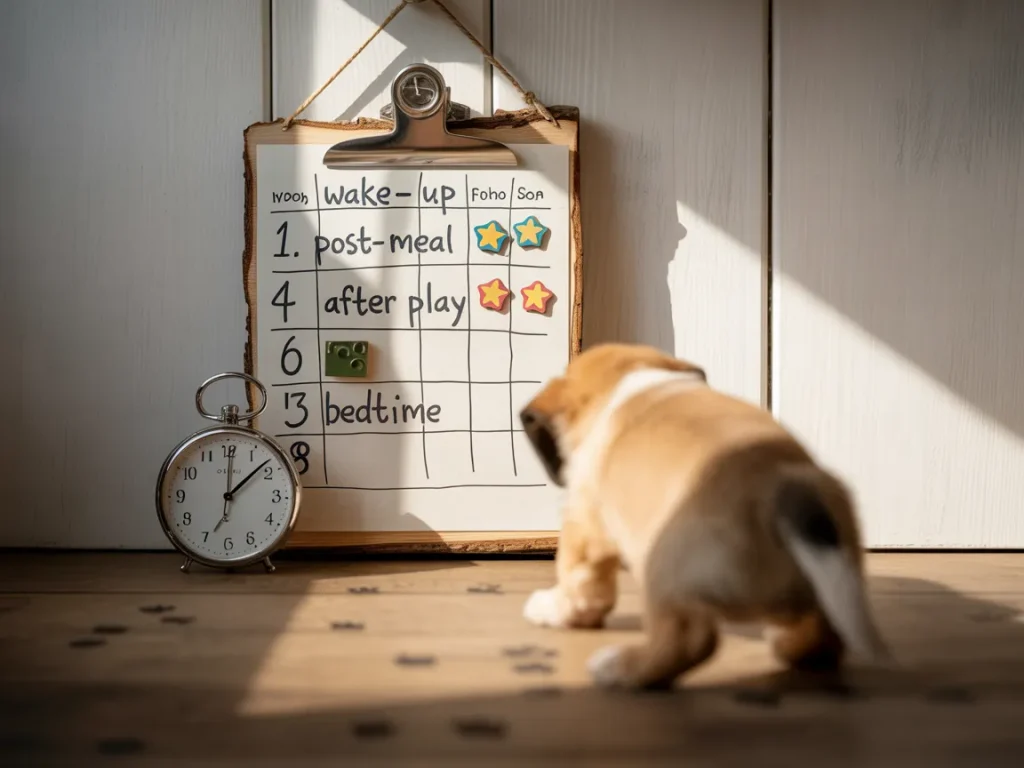
4. Positive Reinforcement “Potty Game” with Variable Rewards
Let’s make potty time a game your puppy actually wants to play. Reward every success in the right spot—then sometimes level it up with a surprise: a tastier treat, a quick chase of a toy, or your best “party voice.” That little bit of unpredictability keeps your pup checking in: What’s the prize this time? Over a few days, they start “playing to win,” not just avoiding mistakes. If you’re curious about the bigger training philosophy behind this, APDT’s LIMA guidelines explain why positive reinforcement should be your first line of teaching.
Keep score in a simple way you’ll actually use—stickers on a calendar, a magnet on the fridge, a note in your phone. After a short streak, give a slightly bigger reward (extra playtime, a fresh chew) to celebrate consistency. If there’s an accident, skip the lecture. Calmly interrupt, guide them to the right spot, and reward when they finish there. Confidence goes up; confusion goes down.
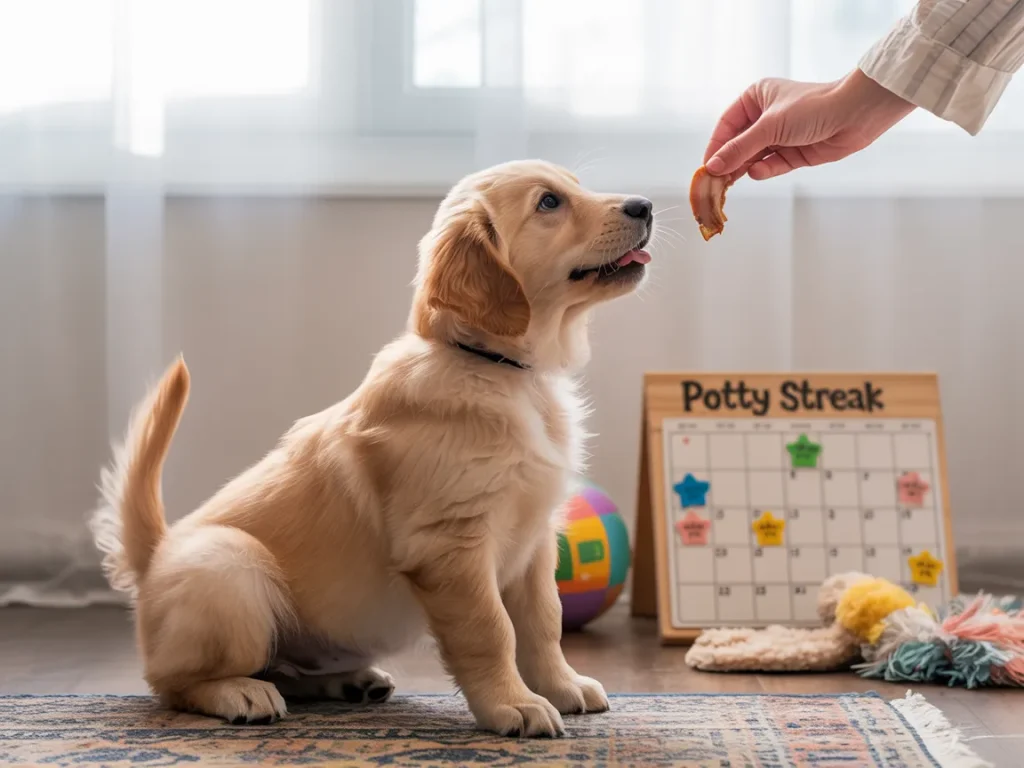
5. DIY Visual and Scent Cues for Faster Recall
Dogs read the world with their noses first and eyes second—so give them both. Outside, place a small washable “marker” with a familiar scent (a cloth lightly touched to a previous success) near the potty zone, and pair it with a clear visual—think a small flag, a mat, or a painted stone. Together, those cues work like a tiny billboard that says, “This is the spot.”
Indoors, stick with one mat texture and the same verbal cue each time. Briefly place your pup on the mat when it’s time, say the cue, reward the result. Refresh mild scents occasionally so the cue stays noticeable but never overwhelming—like a friendly nudge, not a perfume counter.
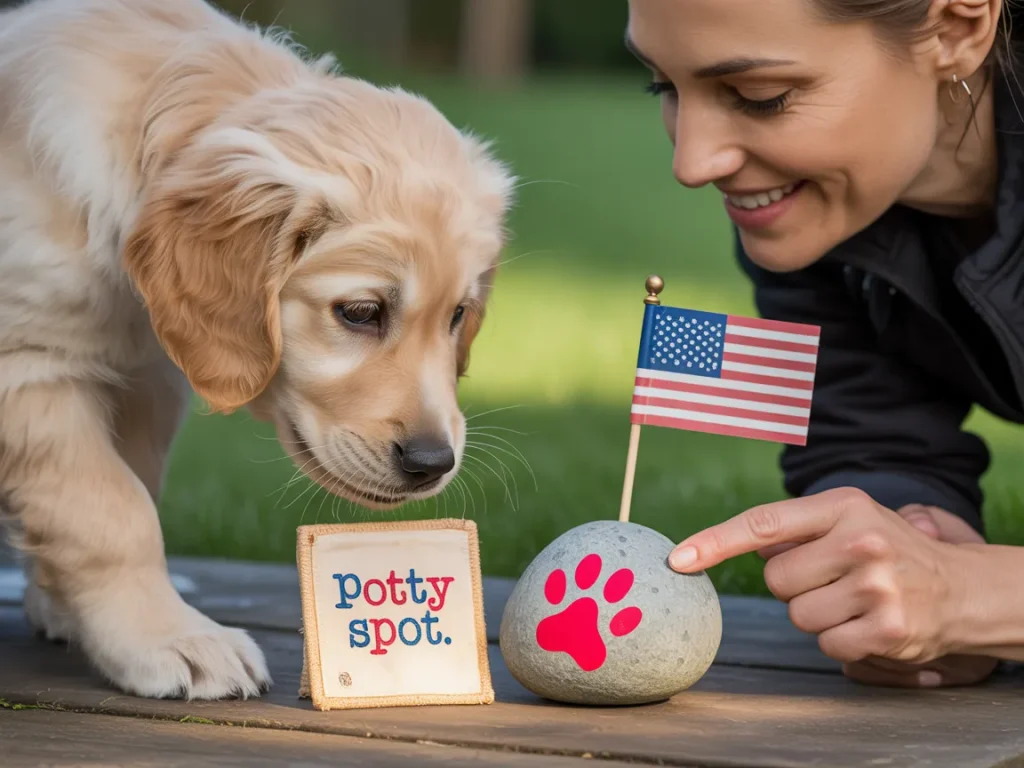
Bonus: Handling Setbacks Without Losing Ground
Accidents happen—usually when schedules wobble or pups grow overnight. If you catch one mid-squat, gently interrupt and guide to the right spot, then reward the finish there. Clean misses with an enzymatic cleaner so yesterday’s mistake doesn’t become tomorrow’s “favorite corner.” If you need a quick how-to, the Humane Society’s guide to removing pet stains and odors is short, practical, and reliable. A tiny “accident kit” (towels, cleaner, spare pads) keeps the reset quick and drama-free.
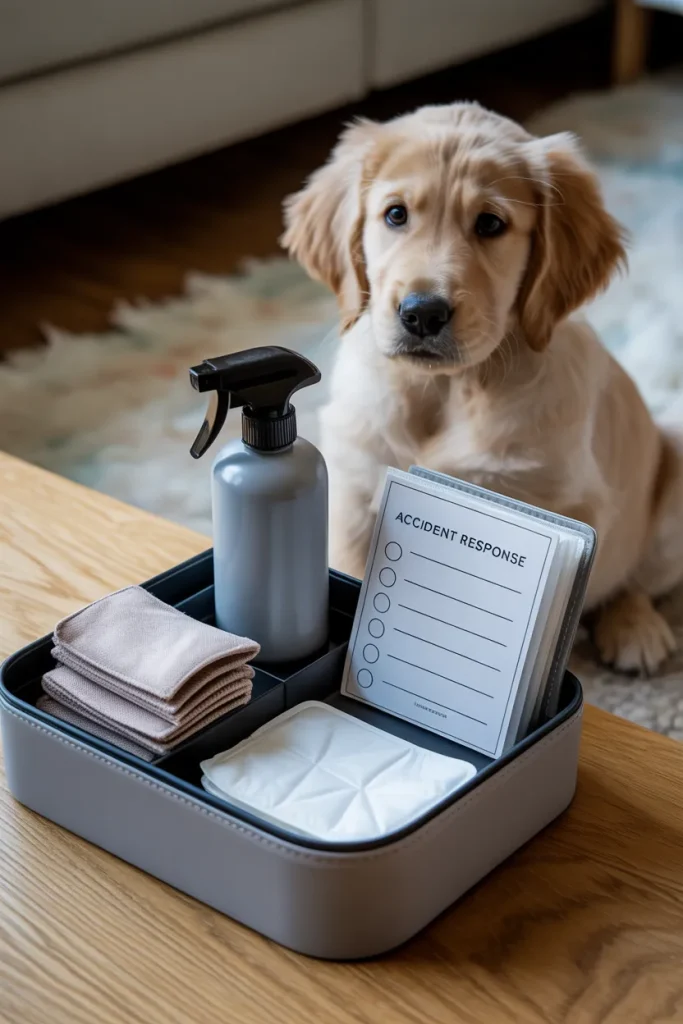
See a little regression? No big deal. Slide back to basics for a few days: more frequent trips, simpler cues, instant rewards. That’s not failure—it’s a tune-up, the training version of tightening a loose lid so the jar seals again.
Conclusion
Potty training doesn’t have to be a long, soggy saga. When you pair a simple schedule with clearly marked potty zones—inside and out—plus gentle transition steps, upbeat rewards, and smart scent/visual cues, the whole routine starts to run like a well-oiled coffee maker. Start small: pick one or two changes and give them a quiet week to work. Watch your pup’s rhythms (they’re little metronomes), nudge the timing, and keep rewards fast and fun. Before you know it, you’ll be celebrating clean floors and confident bathroom breaks—no detective work, no guess-and-stress.
Will there be hiccups? Of course. Puppies are growing machines with tiny bladders and big feelings. When a miss happens, you’ll reset, clean thoroughly, and go back to basics for a couple of days—more trips, same cue, quick praise. It’s not backsliding; it’s a tune-up. Think of potty training like teaching a favorite song: you practice the chorus, then the verses, and soon your dog knows the whole melody without missing a beat.
Stick with the plan, keep your tone sunny, and let the system carry the weight. Your puppy learns faster when the world feels predictable—and you’ll both get your peace (and your carpets) back.
Disclaimer: This article is for informational purposes only and does not constitute professional veterinary advice. Always consult a licensed veterinarian or certified dog trainer regarding the specific needs and health of your dog.

